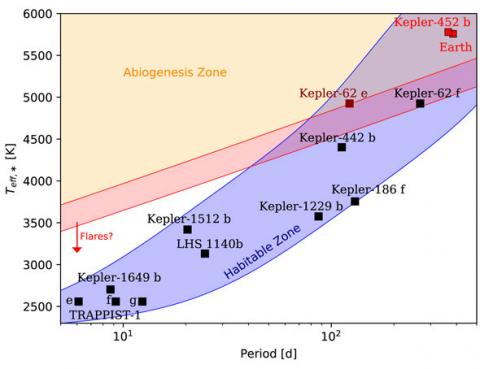
Submitted by Administrator on Fri, 03/08/2018 - 13:58
Scientists have identified a group of planets outside our solar system where the same chemical conditions that may have led to life on Earth exist.
The researchers, from the University of Cambridge and the Medical Research Council Laboratory of Molecular Biology (MRC LMB), found that the chances for life to develop on the surface of a rocky planet like Earth are connected to the type and strength of light given off by its host star.
Of course, it is also possible that if there is life on other planets, that it has or will develop in a totally different way than it did on Earth.
“I’m not sure how contingent life is, but given that we only have one example so far, it makes sense to look for places that are most like us,” said Rimmer. “There’s an important distinction between what is necessary and what is sufficient. The building blocks are necessary, but they may not be sufficient: it’s possible you could mix them for billions of years and nothing happens. But you want to at least look at the places where the necessary things exist.”
According to recent estimates, there are as many as 700 million trillion terrestrial planets in the observable universe. “Getting some idea of what fraction have been, or might be, primed for life fascinates me,” said Sutherland. “Of course, being primed for life is not everything and we still don’t know how likely the origin of life is, even given favourable circumstances - if it’s really unlikely then we might be alone, but if not, we may have company.”
The research was funded by the Kavli Foundation and the Simons Foundation.
Reference:
Paul B. Rimmer et al. ‘The Origin of RNA Precursors on Exoplanets.’ Science Advances (2018). DOI: 10.1126/sciadv.aar3302
Inset image: Diagram of confirmed exoplanets within the liquid water habitable zone (as well as Earth). Credit: Paul Rimmer
Read more here


